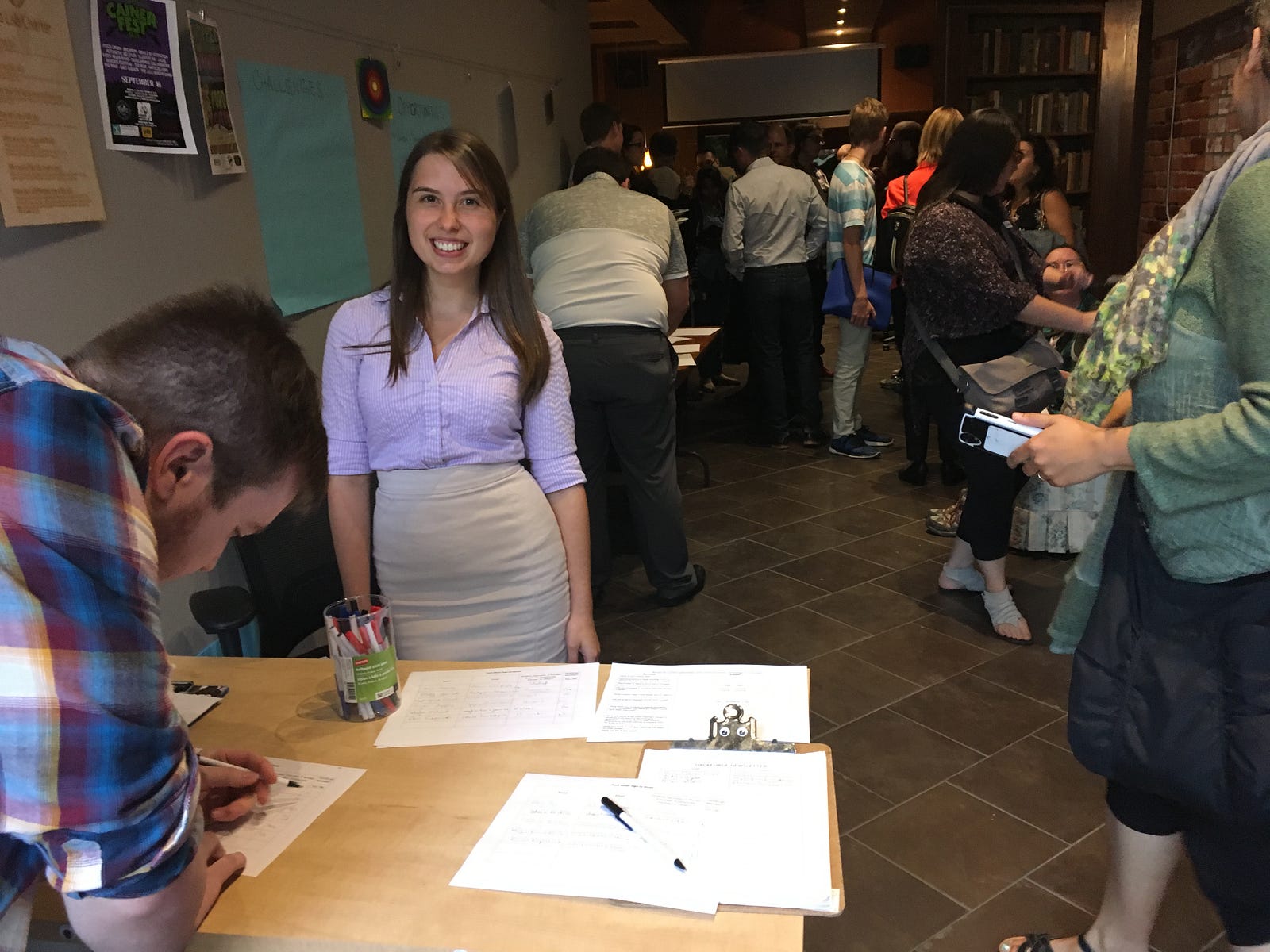Workforce Profiles look at the people behind Workforce WindsorEssex’s 76 In-Demand Jobs. Each week, we talk to a different professional for an inside look into their work. However, this week, we’re looking behind the scenes at one of our researchers, Katie Renaud.
As a Quantitative Labour Market Information Specialist, Katie works with a variety of data to discover facts, figures, and trends related to the local workforce. Katie worked with employer and government data to create the initial list of the 50 in-demand jobs in Windsor-Essex.
We sat down with Katie to discover how she conducts workforce research and how she came into this type of work:
What project are you currently working on?
With Decoding the ICT Workforce, we are trying to increase retention of ICT [Information Communication Technology] workers in Windsor-Essex and discover what workers and students want to help them stay here, and what challenges employers might be facing when it comes to attracting and retaining talent for their businesses.
How is the tech sector doing in Windsor?
ICT in Windsor-Essex can be a bit of a contentious topic. We’re seeing an increasing demand for programmers, web developers and analysts. That demand wasn’t there in the last couple of years due to after-Recession effects and some businesses lagging behind in technology, but now we’re seeing an increase in the trend for those occupations
A lot of students aren’t staying in the area when they graduate, so that’s what we’re trying to address in the Decoding the ICT Workforce project.

How can businesses keep talent?
The Small Business Guide was made to help employers with strategies to increase recruitment and retention in Windsor-Essex, specifically. I met with over 70 employers in the summer over three months and we talked about their retention and recruitment strategies, and their best practices.
We looked at if they’re doing team building or hosting an event in a location that’s specific to our area. We gathered all of that information, compiled it into this great booklet, and now we can use that as a resource for employers who might be struggling with those issues.
Overall, the employers who listen to their employees and work towards solutions to address problems that their employees bring up have the best retention.
I don’t think there was one single thing that worked best for retention across all the businesses.
How did you conduct that research?
That was a mix of qualitative and quantitative data. There were “yes/no” questions that we asked, like “are you having recruitment challenges?” That’s more quantitative data. Then we would ask a broader question, like “what kinds of methods are you using to recruit?” or “what works best for you for retention?” That’s more open-ended qualitative questions.

How do you calculate employment data?
We calculate some occupation numbers ourselves through our quarterly employer survey, but since it can be difficult to survey a good sample of the 30,000+ businesses in Windsor-Essex, we use a lot of data from Statistics Canada from their survey of Employment, Payrolls, and Hours. From that data, Statistics Canada is able to see what people are being paid in certain occupations and then that data is compiled for our use as researchers. That’s done on a monthly basis and we have access to that from a tool from the provincial government.
What is your education background?
I have a background in International Relations and Development. I went to the University of Calgary. That major doesn’t directly relate to this job, but I did a couple of internships and co-op terms in research while I was in University. They all prepared me to have a good grasp of what is involved in analytics and research.
I did two different cooperative education placements while I was in University. My first was for eight months at Aboriginal Affairs and Northern Development Canada (now called Indigenous and Northern Affairs Canada). I worked in their litigation branch doing historical research for cases.

My second co-op was at the Permanent Mission of Canada to the United Nations. I was a Junior Policy Officer, where I did research related to the World Health Organization, the International Labour Organziation, issues and policy that they were addressing at the time. I would attend meetings and prepare my supervisor for the discussions that would take place at those organizations.
Is data always reliable?
Sometimes people can take different data points, skew them and inject their bias into the data. Often times, you’ll see graphs that are skewed a certain way to misrepresent the data, to help the perspective of whoever is putting the data out there.
You have to be careful with the source of the data or who is publishing it and make sure you take an investigative eye to that data set.
Sometimes you’ll see that difference between axis points is very minimal, which can make the comparison in the chart look more drastic than it really is.
What trends do you see coming up in 2018?
We are continuing to see skilled trades to be largely in demand. These are occupations that can’t really be automated or won’t be automated in the near future. We always encourage people to go into the trades, like carpentry, plumbing, tool and die makers.
On the technology side of things, we’re seeing an increase in the ICT workforce. These are jobs safe from automation in the near future and reflect the new knowledge workforce that’s becoming in demand.

